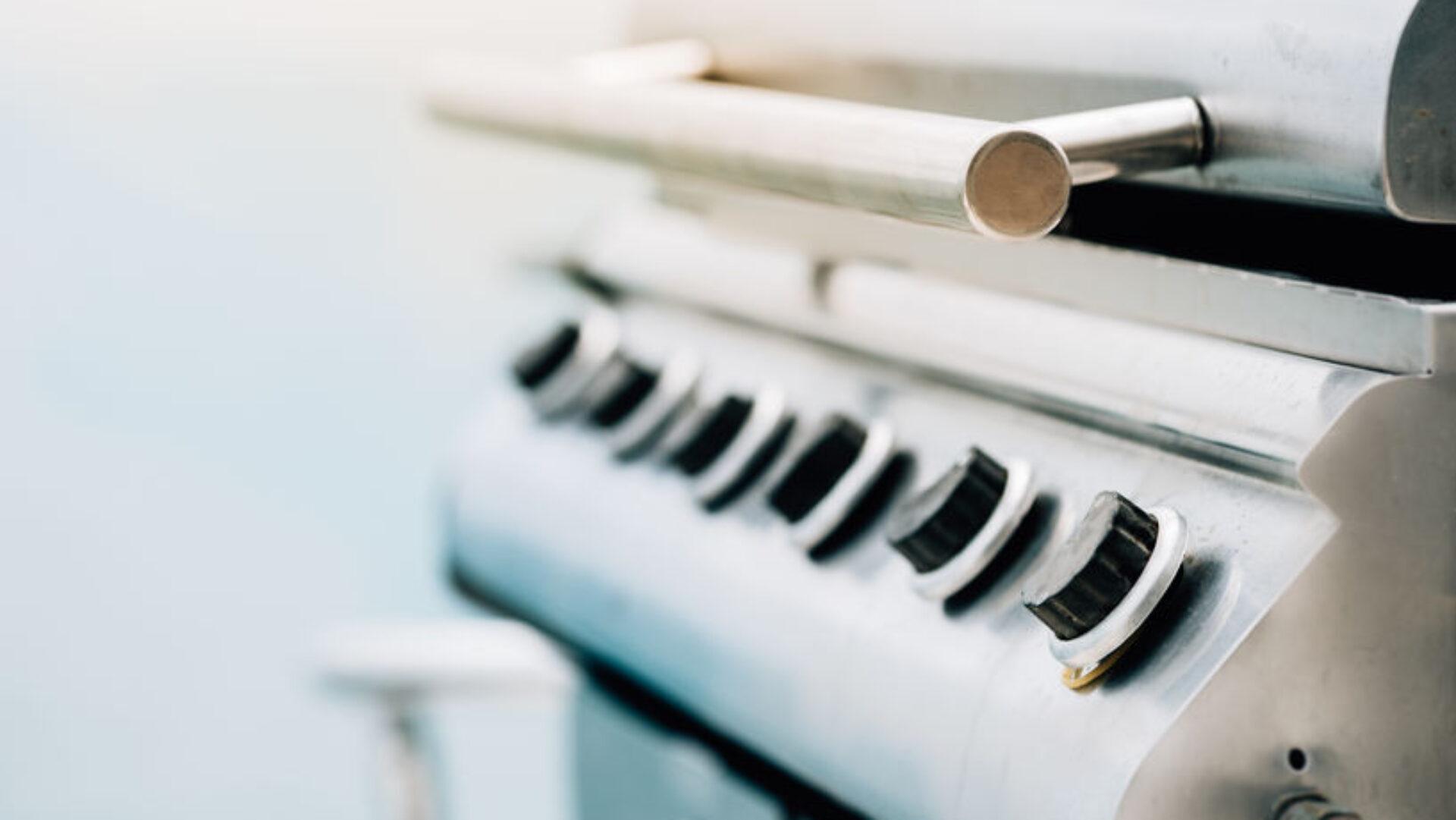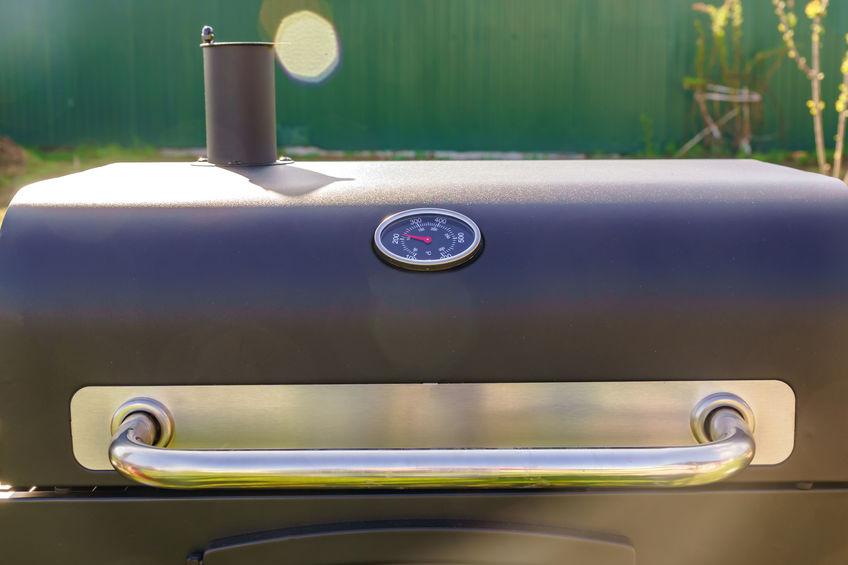
Grilling is a popular outdoor cooking method that requires precise temperature control to ensure that your food is cooked to perfection.
Understanding grill temperature settings is essential to achieving the desired results, whether you’re cooking burgers, steaks, chicken, or vegetables.
Grills usually have temperature settings that range from low to high.
The specific temperature range for each setting can vary depending on the grill’s make and model.
Some grills may have a range of 200°F to 600°F, while others may go up to 700°F or higher.
In addition to the low and high settings, many grills also have a medium heat setting.
This setting is commonly used for cooking foods that require a moderate amount of heat, such as chicken breasts, pork chops, and vegetables.
It’s essential to note that the temperature of your grill can be affected by a variety of factors, including the type and quality of fuel used, the weather conditions, and the grill’s design.
For this reason, it’s crucial to have a reliable thermometer to monitor the temperature of your grill accurately.
By understanding grill temperature settings and monitoring the temperature of your grill, you’ll be able to cook your food to perfection every time.
The Three Heat Zones on a Grill
When grilling, there are typically three heat zones that can be used to cook food to perfection.
High Heat Zone
This is the area of the grill that is directly over the flames or burners.
It typically has a temperature range of 450°F to 650°F (230°C to 350°C) and is used for searing meats, grilling thick steaks, and charring vegetables.
Medium Heat Zone
This is the area of the grill that is next to the high heat zone and has a temperature range of 350°F to 450°F (175°C to 230°C).
It is ideal for cooking foods that require a moderate amount of heat, such as chicken breasts, pork chops, and vegetables.
Low Heat Zone
This is the area of the grill that is farthest away from the flames or burners and has a temperature range of 225°F to 350°F (110°C to 175°C).
It is used for indirect grilling, where food is placed on the cooler side of the grill and cooked with the lid closed.
This is ideal for cooking large cuts of meat, such as roasts, that require a longer cooking time to ensure even cooking.
By utilizing the three heat zones on a grill, you can create different temperature gradients that allow for more precise cooking and ensure that your food is cooked to perfection.
What is Considered “Medium Heat” on a Grill?
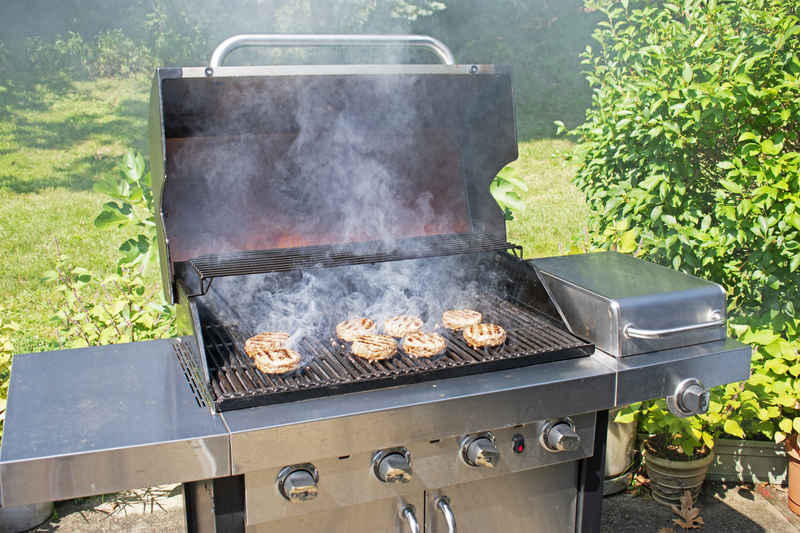
Medium heat on a grill typically refers to a temperature range between 350°F and 450°F (175°C and 230°C).
This temperature range is often used for grilling foods that require a moderate amount of heat to cook through, such as vegetables, chicken breasts, and pork chops.
Medium heat is also the ideal temperature range for searing meats, as it allows the meat to develop a crispy, caramelized exterior while ensuring that the inside cooks evenly.
Additionally, medium heat is often used for indirect grilling, where food is placed on the cooler side of the grill and cooked with the lid closed, resulting in a slower, more even cooking process.
It is important to note that the exact temperature range for medium heat may vary depending on the type of grill being used, the thickness of the grill grates, and other factors such as wind and humidity.
As such, it is always recommended to use a meat thermometer to ensure that the internal temperature of the food reaches a safe temperature for consumption.
The Four Most Popular Grilling Temperatures Explained
The majority of your grill recipes will call for the following temperature settings.
Medium-Low
Medium-low is about as low as most people will go (short of smoking and slow cooking).
Food takes longer to cook, but the results can be excellent, especially when working with ingredients and recipes that need baking or roasting.
This is also a great temperature for ingredients that could burn and burst, such as hot dogs and raw sausages.
Medium-low is 325°F, but many enthusiasts go right down to 225°F.
This is a good temperature for adding woodchips for smoking.
There will be plenty of time to introduce rich smoky flavor into the food.
Medium
Medium heat is ideal for meats and other ingredients that take longer to cook.
Thicker cuts of steak, poultry pieces, whole birds, and fish work well at this temperature.
Bone-in chicken is especially juicy and flavorful when cooked at medium.
The medium temperature of a grill is 350°F.
Use an ambient probe or your grill’s hood thermometer to maintain this setting.
Medium-High
Medium-high allows for faster cooking, and it’s perfect for medium-rare food.
Ingredients like juicy steaks, burgers, and skewered vegetables work well at this temperature range.
You should set your grill to a temperature between 375°F and 450°F if your recipe calls for a medium-high heat setting.
High
Some foods will benefit from rapid cooking and searing hot temperatures.
Skewered meat and thin cuts are especially well-suited to high heat.
The temperature just above the grill surface should be at least 450°F.
Tips for Achieving the Perfect Medium Heat on Your Grill
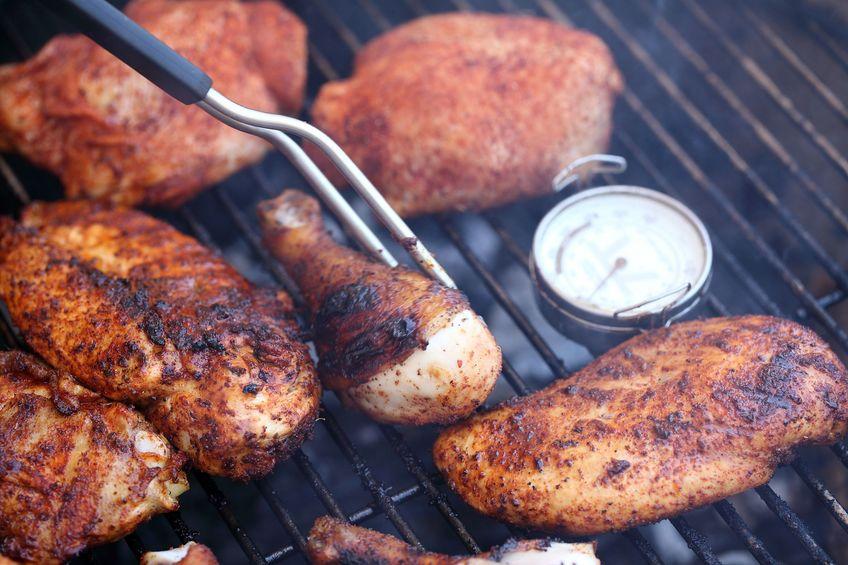
Achieving the perfect medium heat on your grill can be challenging, especially if you’re new to grilling.
However, with a few tips and tricks, you can achieve the desired temperature and cook your food to perfection.
Here are some tips for achieving the perfect medium heat on your grill.
- Preheat your grill. Before you start cooking, make sure to preheat your grill for at least 10-15 minutes. This will help you achieve the desired temperature and ensure that your food cooks evenly.
- Use a thermometer. Invest in a good quality thermometer, like this Weber iGrill Ambient Grill Thermometer. This will help you avoid overcooking or undercooking your food.
- Adjust the burners. If you’re using a gas grill, adjust the burners to achieve the desired temperature. For medium heat, turn the burners to a medium setting. If you’re using a charcoal grill, you can adjust the airflow to control the temperature.
- Use indirect heat. For foods that require longer cooking times, such as whole chickens or roasts, consider using indirect heat. This involves placing the food on the side of the grill without direct heat, which allows it to cook more evenly without burning.
- Keep the lid closed. Keeping the lid closed while grilling helps to maintain a consistent temperature and prevent flare-ups. Only open the lid to check on your food or to turn it over.
- Don’t overcrowd the grill. Overcrowding the grill can cause the temperature to drop, making it harder to achieve the desired heat. Leave enough space between each item to allow for even cooking.
By following these tips, you’ll be able to achieve the perfect medium heat on your grill and cook your food to perfection every time.
Cooking Times for Different Foods on Medium Heat
The cooking times for different foods on medium heat can vary depending on the type and thickness of the food.
Here are some general guidelines for cooking times on medium heat.
Chicken breasts
Cook chicken breasts on medium heat for 6-8 minutes per side, or until the internal temperature reaches 165°F (74°C).
Pork chops
Pork chops should be cooked on medium heat for 4-5 minutes per side, or until the internal temperature reaches 145°F (63°C).
Burgers
Cook burgers on medium heat for 5-7 minutes per side, or until the internal temperature reaches 160°F (71°C) for medium doneness.
Fish
Depending on the type of fish, cook on medium heat for 3-5 minutes per side, or until the internal temperature reaches 145°F (63°C).
Vegetables
Grilled vegetables can vary in cooking time depending on the thickness and type of vegetable.
Generally, grill vegetables on medium heat for 5-10 minutes, turning occasionally until they are lightly charred and tender.
It’s important to note that these are just general guidelines, and cooking times can vary depending on the thickness and type of food.
To ensure that your food is cooked to perfection, use a meat thermometer to check the internal temperature of the food.
Also, if you’re cooking multiple items at once, you may need to adjust the cooking times to ensure that everything is cooked evenly.
By keeping a close eye on your food and adjusting cooking times as needed, you’ll be able to achieve the perfect medium heat and cook your food to perfection.
Factors that Affect Grill Temperature
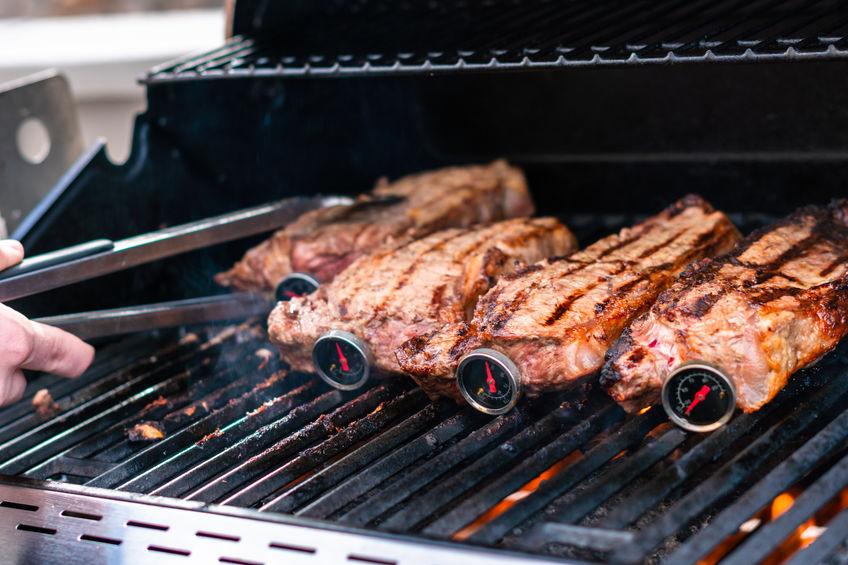
There are several factors that can affect the temperature of a grill, including:
Type of Grill
Different types of grills, such as gas, charcoal, or pellet grills, may have different heating capabilities and temperature ranges.
Weather Conditions
Wind, humidity, and ambient temperature can all impact the temperature of a grill, as they affect the grill’s ability to maintain heat.
Grill Size and Design
The size and design of a grill can affect its heating capacity, as larger grills may take longer to heat up and may have uneven temperature distribution.
Type of Fuel
Different types of fuels, such as propane, natural gas, charcoal, or wood, may burn at different temperatures and affect the grill’s heating capability.
Quantity of Fuel
The amount of fuel used in a grill can impact the temperature, as more fuel can produce more heat, while less fuel may result in lower temperatures.
Grill Maintenance
The condition of the grill, such as the cleanliness of the grates and burners, can impact its heating capabilities, as dirty or clogged grates and burners may impede the flow of heat.
By being aware of these factors, you can make adjustments to your grill to ensure that it maintains a consistent temperature and cooks your food evenly.
Common Mistakes to Avoid When Grilling at Medium Heat
Grilling at medium heat can be a challenge, especially if you’re new to grilling.
Here are some common mistakes to avoid when grilling at medium heat.
Overcrowding the Grill
Overcrowding the grill can cause the temperature to drop, making it harder to achieve the desired heat. Leave enough space between each item to allow for even cooking.
Flipping the Food Too Often
Flipping the food too often can cause it to dry out and lose flavor.
Only flip the food once or twice during cooking.
Not Resting the Meat
Letting the meat rest for a few minutes after grilling allows the juices to redistribute and helps to keep it moist and flavorful.
Closing the Lid Too Often
Opening the lid too often can cause the temperature to drop and affect the cooking time.
Only open the lid when necessary to check on your food or turn it over.
By avoiding these common mistakes, you’ll be able to grill at medium heat and cook your food to perfection.
Bottom Line – Mastering the Grill with Medium Heat
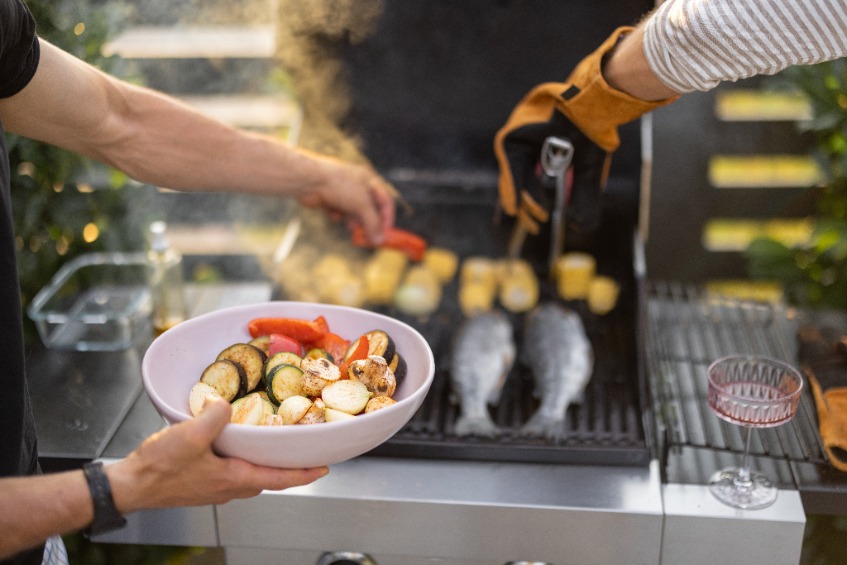 Mastering the grill with medium heat is a crucial skill for any grill master.
Mastering the grill with medium heat is a crucial skill for any grill master.
Medium heat allows for a wide range of cooking techniques, including searing, grilling, and indirect cooking, making it a versatile temperature range for cooking a variety of foods.
To achieve and maintain medium heat on your grill, it’s important to consider factors such as the type of grill, weather conditions, grill size and design, type and quantity of fuel used, and grill maintenance.
By being mindful of these factors and using a meat thermometer to ensure food safety, you can become an expert at cooking with medium heat on your grill.
By utilizing the three heat zones on your grill, including the high, medium, and low heat zones, you can create different temperature gradients that allow for more precise cooking and ensure that your food is cooked to perfection.
In conclusion, mastering the grill with medium heat requires practice, patience, and attention to detail, but with the right techniques and tools, you can become a grill master and impress your guests with perfectly cooked meals every time.
